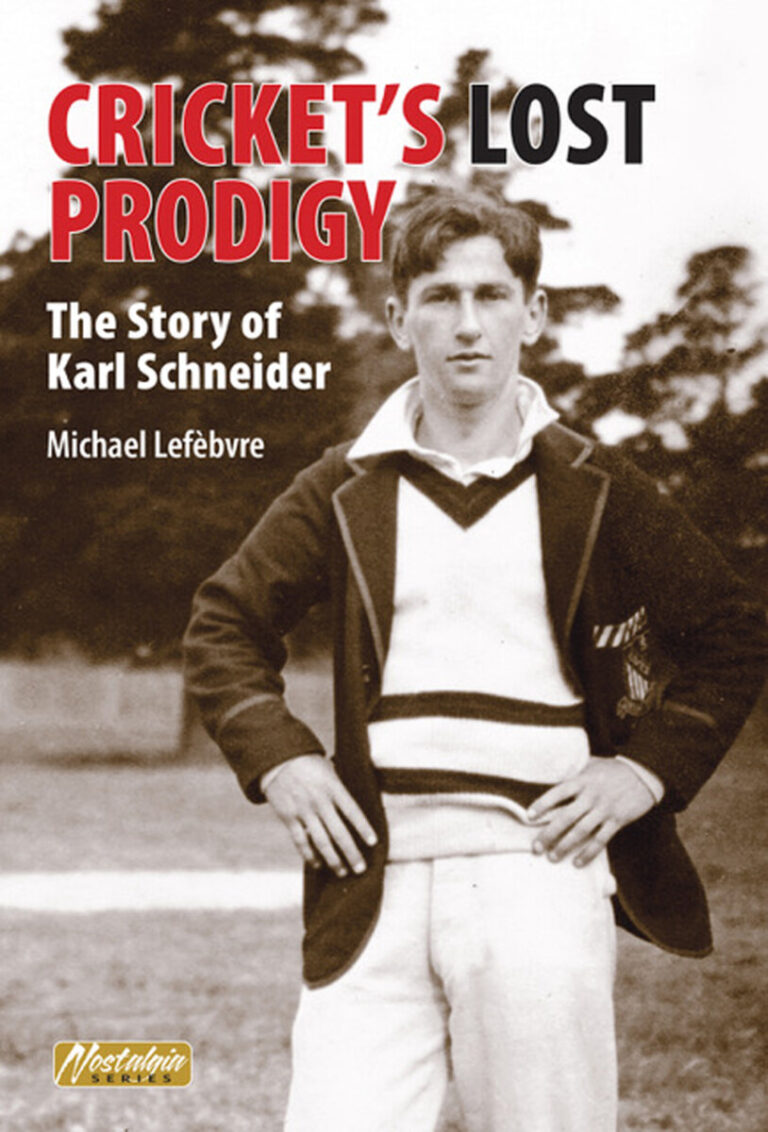No products in the cart.

Due in at the end of March, are signed copies of John Benaud’s new book on the 1973 Australian tour of the West Indies, entitled ‘The First Ball After Lunch’
It’s more than surprising that Ian Chappell’s 1973 tour to the West Indies is largely overlooked by cricket historians when they seek out the game’s magic moments via old Test scoreboards, 2,580 of them as at February 9, 2025 … and, still counting.
It’s more than likely they’re looking only for gold—such as Bradman’s 1948 ‘invincibles’—rather than rough diamonds; certainly they’d not be looking for trouble, and, to a lot of cricket people back in those heady days of the 70s, any mention of Ian Chappell was troubling—as in, “trouble at mill”.
Yet Chappell’s men, self-described by its gladiatorial, gallant opening batsman Ian Redpath as a “bunch of desperates”, would impact the game of cricket in such a revolutionary way that “unforgettable” should be the descriptor.
The team went through the tour undefeated, yet it was under strength. The elegant Paul Sheahan, in his best career form, and Ashley Mallett, by then a world-class off-spinner, were late withdrawals. Both had been important players on the 1972 Ashes tour, where Chappell had started building a will-to-win momentum
Mallett and Sheahan were victims of the ‘self-drop’—unavailable for personal reasons—which could be any of income, a job, family … take your pick. In those days players, through their unavailability or retirement, would often do the job of the selectors, allowing new faces into a team. Cricket as a profession? Hardly.
Sheahan knew the truth: “I’m a schoolteacher who plays cricket, not a cricketer who teaches.” In their places the selectors chose me, and the rookie leg-spinner John Watkins. We were first-time tourists, destination the Caribbean cricketing cauldron.
When the great Redpath was inducted into Australian Cricket’s Hall of Fame in January 2023, in his gracious acceptance speech he announced, with twinkling eyes and that gritty chuckle: “There are hazards on cricket tours … “
Chappell’s team encountered many in 1973, the most notable being the terrible back injury endured by the great Dennis Lillee, expected to be our match-winning influence; pitches were tailored only for their three spinners, the Third Test pitch had a ‘pothole’, the Fourth had a ‘ripple’; a hotel called The Tower sort of summed it up. It was a tough, tough tour, lots of sweat and some blood.
“Yet we won,” said Kerry O’Keeffe. “I don’t know how we did it.”.
A beginning was the victory against gargantuan odds in the Third Test, on a parched, drought-wrecked Port of Spain outfield, the grey pitch a spinner’s dustbowl, where one of Australia’s bowling heroes was Max Walker, the medium pacer with the technique of a circus contortionist.
Mr. Walker’s ‘miracle ball’ was the first ball after lunch on the final day, the West Indies needing 66 runs to win, with five wickets in hand. He seduced Kallicharran into dabbing at one he should have ignored—in the commentators’ corridor of uncertainty—and Rod Marsh did the rest, the coup de grace being a ‘fabulous four’ from ’O’Keeffe.
The end, no doubt about it, was Ian Chappell leading from the front and absolutely trouncing Rohan Kanhai in the captaincy department. Chappell’s team had character and lots of characters, aka larrikins. That mix wasn’t always a guarantee of success, which might be why larrikins are hard to find in the modern game, although it’s more likely to be officialdom’s nervousness about the sacred ‘role model’ factor. It’s fair to say Chappell’s men, most of them, were rebels of remarkable resilience.
And, they were restless. It was their “fair day’s pay for a fair day’s play” attitude that was getting up official noses, and their skyrocketing popularity, their combative style, their winningness, offered them leverage. Chappell had a few chats about it with Sir Don Bradman, cricket’s main man, and was offered pretty much small change until Kerry Packer tossed his white ball onto the negotiating table.
Sir Donald and Co. hoisted their white flag. The larrikins won the day … sing after us, C’mon Aussie, C’mon:
Lillee’s pounding down like a machine
The Chappells’ eyes have got that killer gleam
Marshy’s takin’ wickets
Mr. Walker’s playing havoc with the bats
And, Dougie’s chewin’ gum
In Jamaica, Dougie had a small keg on his room veranda; the context for any tut-tutting coaches is that he was a leading batsman on the tour, including a never-to-be-forgotten, or matched, century in a session at Trinidad. All these moments, and any others ranging from the magical, the miraculous, the murky, to the marvellous, even some misadventure were surely worth recording.
The First Ball After Lunch seemed like an appropriate title for a diary of the tour, and any commentary on subsequent events, moments of record that were to influence the game, its players and fans, in so many ways never thought possible.
Fifty years on the question is: were those radical changes—fatter wallets, white balls, night games, T20—good for cricket, or not so good?
The word out there is that Test cricket is dying, and it’s all Kerry Packer’s fault; that soon the sudden, relentless proliferation of cricket franchises, which are exclusively for the very short forms of the game, T20 and less, will saturate the programme.
It’s only a thought, but do you think cricket is in danger of eating itself?
Test cricket as we have known and loved it might not survive. How can it? If it doesn’t it won’t be because Ian Chappell’s desperates put their Test cricket careers on the line to get a fairer deal for all cricketers, and Packer helped them out.
It will be because modern society, its pace, its constant search for instant satisfaction, its passion for rich lists, its disregard for tradition, its selfishness, will hang it out to dry. Grassroots cricket, the foundation of the Test game where character is developed is already wilting under apathetic administration.
The Chappell generation is remembered as the one that gave players better conditions to continue in the game; the current generation needs to be careful it’s not remembered as the generation that forgot the game.
Never miss a sale or new release. Subscribe to cricketbooks.com.au

Cricketbooks.com.au is Australia’s number 1 website and online store for cricket publications and memorabilia. Coordinated by Ken Piesse – Author, Commentator, Public Speaker, and Publisher – cricket books has Australia’s largest range of both new releases and classic collectibles, cigarette cards, rare photographs, and much more.
PO Box 868
Mount Eliza, Victoria 3930, Australia
Mob: 0419 549 458
Tel: (03) 9787-8023
Email: kenpiesse@ozemail.com.au